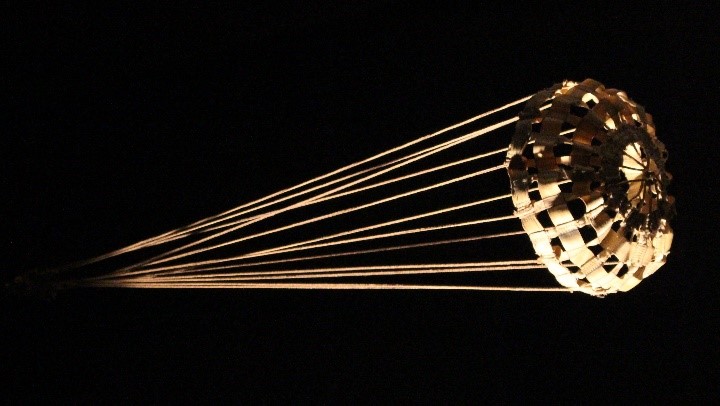
Touch down!
After the ascent phase, the Stratos III nosecone will have to be recovered. The recovery is important as flight data and payloads are stored in the nosecone. Without a successful recovery, it could be difficult to validate the record. In some previous updates we have shown several parachutes and multiple parachute deployment device tests. This blogpost will give a complete overview of the entire recovery system.
After the rocket reaches apogee it will begin to fall back to the ground. During this phase we will separate the tank from the nosecone. This is done for two reasons. The first is mass reduction, a lighter object is much easier to recover. Secondly, the nosecone will be unstable and as a result will go into a flat spin. This is desirable because a spinning nosecone will experience much more drag than if it were to go nose down causing it to decelerate substantially before the parachutes have even been deployed. This flat spin can be seen in the on-board video of the Stratos II+ flight (https://youtu.be/bsqNr3M-mYM). The tumbling can be seen from about 30 seconds into the video.
At about 4 km the speed of the nosecone is below the speed of sound and it is safe to deploy the parachutes. The goal of the parachute system is to reduce the velocity of the nosecone to landing velocity (below 20 m/s). However, as the nosecone is spinning one cannot just deploy a large parachute. This would entangle with the nosecone and therefore not inflate. In order to stop the spin Stratos deploys a small parachute. This parachute is called the drogue parachute and is made from Twaron, a strong and light para-aramid material. Twaron was chosen as the mechanical and thermal loads on the parachute can be quite high.
Even though a small parachute does not entangle easily one still needs to ensure that the lines do not wrap around the nosecone. This is done by a cold gas deployment device (CGDD). This system can shoot out the drogue parachute at about 30 m/s (almost 100 km/h)! The drogue parachute will stabilise the nosecone and further reduce the velocity.
At about 1000 meters the main parachute will be deployed. This parachute is pushed out by a much simpler spring system. This is sufficient as the nosecone is not spinning anymore. When the main parachute inflates it decelerates the nosecone to below 20 m/s for a safe water landing.
Written by Lars Pepermans.


